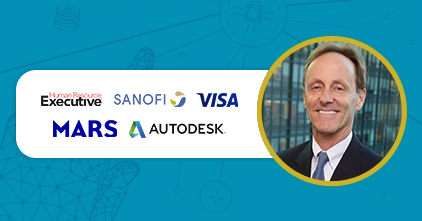Time is of the essence for professionals who are busy juggling their responsibilities with training. With microlearning, they can take lessons in a fraction of the traditional training time. See how this approach helps learners and how you can incorporate it into your training strategy.

Let’s face it: Today’s professionals are pushing to do everything all at once. With organizations determined to train employees to become better, smarter, and more skilled, employees will have to adjust their expanding to-do lists to factor in training.
Suffice it to say that for professionals, every minute counts. This study from Valamis showed that 48% of employees pointed to lack of time as their most significant setback when it comes to training. In addition, Asana’s survey found that 33% of employees struggle with distractions at work.
Here’s where microlearning comes in. Cascading compact learning modules may answer two of the most pressing learning challenges for professionals: limited attention spans and lack of time.
How can microlearning help learners work around these challenges? And, more importantly, how can you incorporate it into your organization’s training strategy? Let’s break it down.
Addressing Time Constraints
Digital learning—and, by extension, microlearning—is all about convenience. They both offer an alternative to longer and more traditional forms of training, which only represent about 6% of training conducted nowadays. Instead of finding themselves in a conference room for hours on end, employees can now take lessons on their own time.
Microlearning, with its bite-sized format, enhances the ease of digital training. With short and straight-to-the-point lessons, employees can jump right into learning without reconfiguring their entire workday or physically going to training venues.
Organizations can make it even easier for their employees to train by integrating microlearning modules into their learning systems. This would allow employees to seamlessly access learning anytime, anywhere, and on any device. By eliminating practical and physical barriers, organizations can make learning feel less like a chore to booked and busy employees.
Enhancing Engagement and Learning Experience
According to Josh Bersin, employees only have about 1% of the workweek for training. Aside from providing them with fast and instant access, how can organizations make that 1% worth their learners’ while?
Organizations can do this by framing training and development as something that learners would find appealing, leading them to access lessons without being required to. Microlearning comes in handy for this purpose. Shorter lessons would feel less daunting and more doable. Employees would be less likely to shirk much-needed training if they could complete a module in 15 minutes or less.
Moreover, the nuggets of information would help them focus better than longer training sessions. And because it’s in digital format, organizations can utilize graphics and other forms of media or even gamify the training to make the overall experience more fun and engaging.
To make training even more appealing to learners, consider crafting an engagement campaign that raises awareness of training availability and its microlearning features. You can include success stories and overall learning benefits in your messaging to encourage learners further.
Personalizing Knowledge Delivery
In microlearning, content matters as much as time. A 10-minute module packed with learner-relevant information can go a long way.
Enhancing microlearning with personalization optimizes the learning time with lessons that directly address the learner’s needs. The targeted materials also contribute to knowledge retention because they are applicable to the learner’s job functions. Short, digital lessons would also be easier to review as needed.
You can deliver a hyper-personalized training path for your learners by deploying an AI-powered eLearning platform that recommends materials based on their current learning level and progress. Prioritizing tailored lessons ensures that learners will have a time well spent, however quick it may be.

Exploring Language Training with Microlearning
Consider microlearning courses if you’re looking to boost learner participation and engagement. With microlearning, training becomes accessible and learner-focused. It empowers learners to train whenever and wherever they want, in as little or as much time as they want.
Microlearning also works well if language learning is part of your training curriculum. Its concept of breaking down complex topics into smaller chunks makes it conducive to language acquisition.
For your microlearning and language training needs, tap into a learning partner who understands learners’ challenges and delivers a wide range of digital language lessons and solutions that fully adapt to your learners.
Align your organization’s goals with your learners’ development with goFLUENT. Drop us a line and see how you can transform your learning strategy today!



